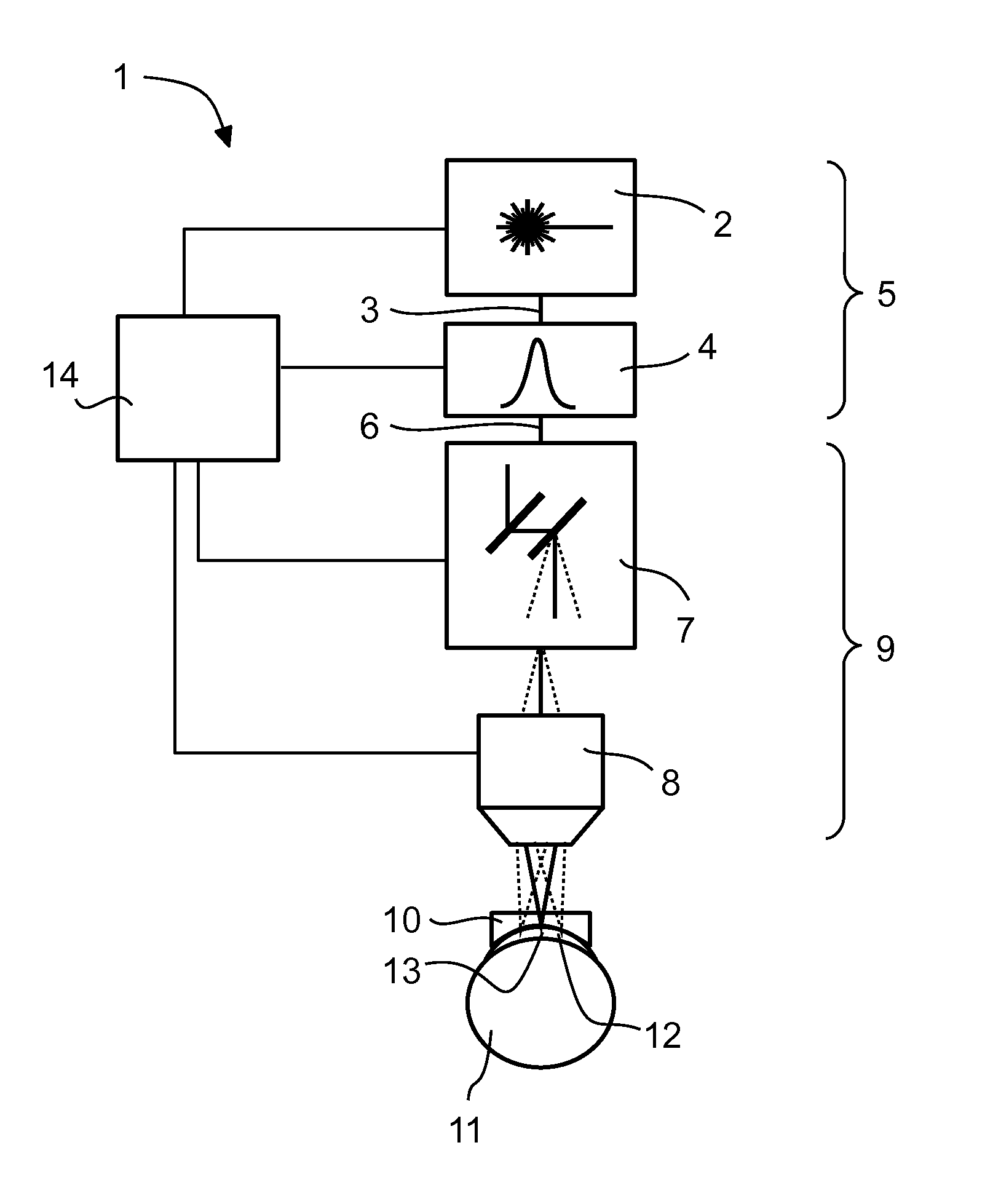Creation of curved cuts in the inside of the eye cornea
a technology of corneal lenticle and cutting edge, which is applied in the field of isolating lenticle in the cornea of the eye, can solve the problems of no longer being able to create any coherent cut surface, procedure needing to be interrupted, and reducing the precision of cutting surface creation, etc., to achieve the effect of high precision and quick creation of cut surfa
- Summary
- Abstract
- Description
- Claims
- Application Information
AI Technical Summary
Benefits of technology
Problems solved by technology
Method used
Image
Examples
Embodiment Construction
[0055]FIG. 1 shows, schematically, a device 1 for carrying out a lenticle-extracting correction of impaired vision. Device 1 has a laser 2 which provides pulsed laser radiation, wherein in the embodiment outlined, the laser 2 emits a pulsed pure beam 3 which has a wavelength which penetrates into the tissue of the cornea of an eye, with the result that a machining by means of non-linear effects can take place there. Pure beam 3 is shaped by a chopper 4 with regard to pulse duration, wherein predistortion known from the state of the art can take place, which ensures that the desired pulse length of for example ≦1 ps is present after passing through the further optical path of the beam path in the material, i.e., in the cornea of an eye. Chopper 4 and laser 2 form a laser beam source 5 which emits a pulsed laser beam 6 of the desired pulse length.
[0056]Pulsed laser beam 6 also passes through a scanner 7 which preferably brings about a two-dimensional deflection transverse to the direc...
PUM
 Login to View More
Login to View More Abstract
Description
Claims
Application Information
 Login to View More
Login to View More - R&D
- Intellectual Property
- Life Sciences
- Materials
- Tech Scout
- Unparalleled Data Quality
- Higher Quality Content
- 60% Fewer Hallucinations
Browse by: Latest US Patents, China's latest patents, Technical Efficacy Thesaurus, Application Domain, Technology Topic, Popular Technical Reports.
© 2025 PatSnap. All rights reserved.Legal|Privacy policy|Modern Slavery Act Transparency Statement|Sitemap|About US| Contact US: help@patsnap.com


